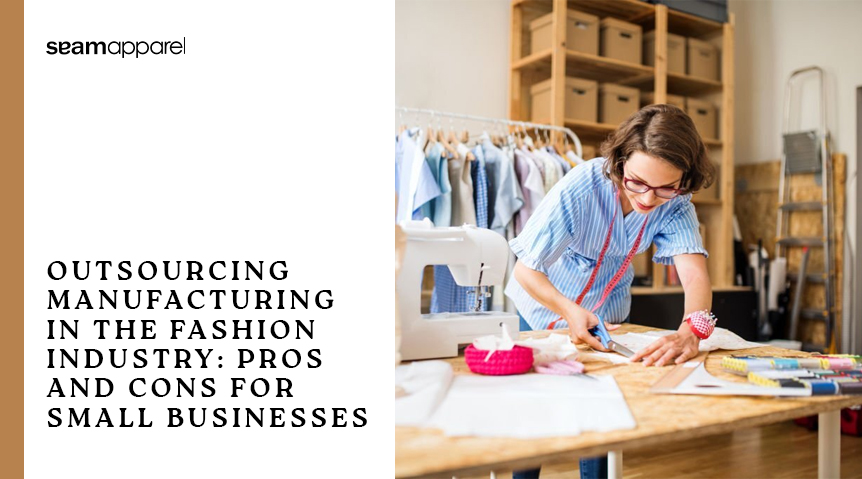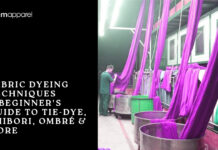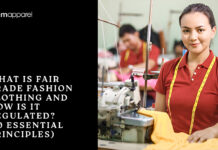Fast-rising fashion demand causes businesses to frequently become overburdened with internal manufacturing. You own a successful small fashion business and want to take it to the next level. Outsourcing your manufacturing is an option worth exploring.
The fashion industry frequently outsources manufacturing; up to 97% of the apparel sold in the United States is produced abroad. How much does manufacturing outsourcing cost? It might be quite enticing for a small business owner to reduce production expenses by 50–70%. You envision being able to increase your creative investments in your company or simply increase your profit margins.
Before chasing the promise of cheap labour and high profits, make sure you go in with your eyes wide open. Outsourcing also brings new challenges around quality control, intellectual property protection, long lead times, and managing relationships across time zones and cultures. The learning curve can be steep if you don’t have experience with overseas manufacturing.
So should you outsource clothing manufacturing or not? You must understand the pros and cons of outsourcing production, which can help you make a decision that is in line with your company’s values and growth plan. Both options can be successful with good planning, despite the complexity of the choice.
What Is Outsourcing In Fashion Manufacturing?
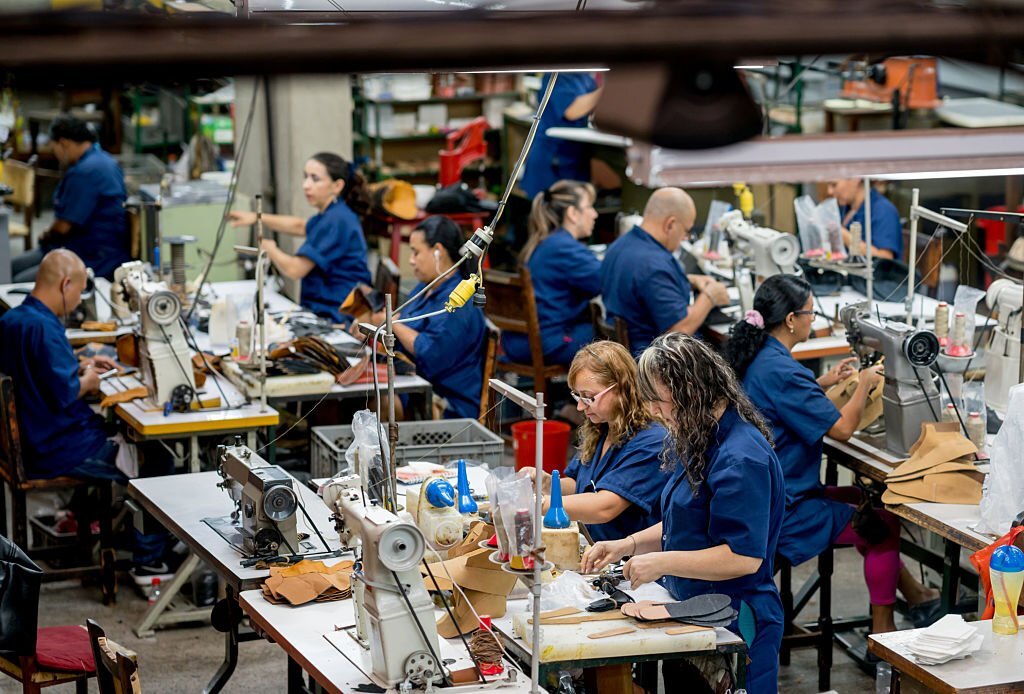

Outsourcing manufacturing means hiring a third-party factory to produce your fashion line. To keep expenses down while concentrating on design and marketing, custom clothing manufacturers for small businesses can be a terrific resource.
To do the tasks that a firm’s workers would typically complete, a business will outsource manufacturing to a third-party entity. The majority of outsourced manufacturing often occurs in foreign countries with the primary goal of decreasing costs, particularly by lowering labour costs and manufacturing overheads. This is because hiring internal staff may be more expensive for a business than engaging the services of a third-party provider.
In addition to cutting expenses, a company can think about outsourcing manufacturing to boost production or redistribute resources.
Manufacturing outsourcing proponents contend that using this strategy in a corporation encourages it to direct resources where they will be most useful and even contributes to the maintenance of a robust free market on a global scale.
How Do You Outsource Manufacturing In The Clothing Industry?
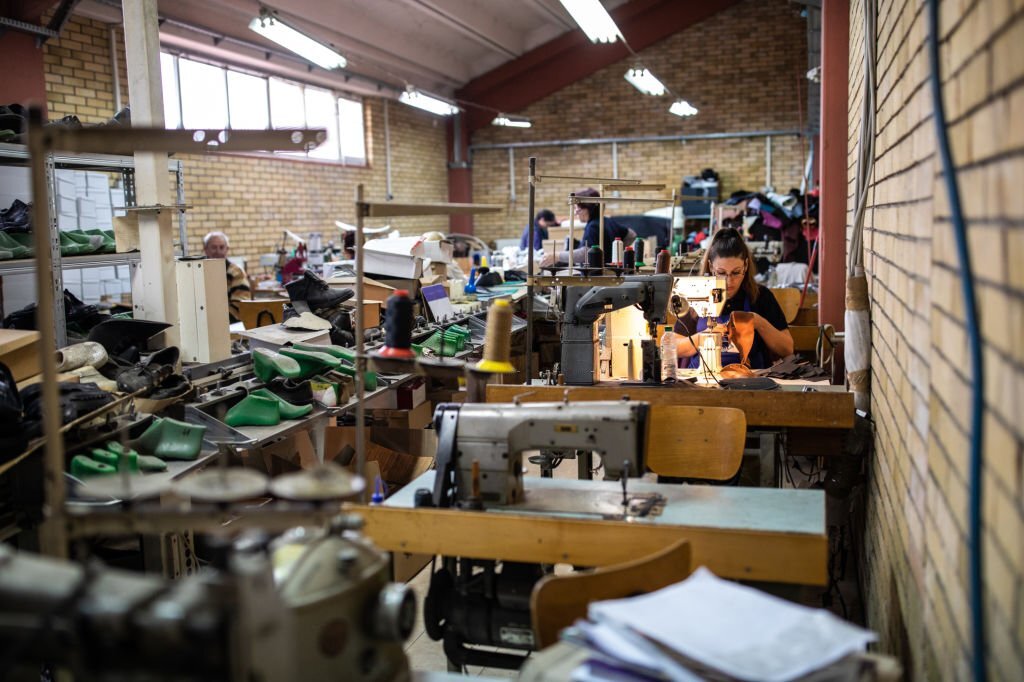

So you have a great clothing design and are ready to get it manufactured, but you don’t have the resources to do it yourself. Outsourcing production to a clothing manufacturer is a smart solution. Here’s how to outsource clothing manufacturing:
Finding The Right Factory
Do some research on overseas clothing manufacturers that specialize in your type of apparel. Check out reviews from other brands that have used them. Reach out to a few factories that interest you to discuss their production capabilities, minimums, pricing, and turnaround times. Ask for references from current clients.
Once you find some promising options, request samples of their work to review the quality firsthand. If everything looks good, you’ll want to obtain quotes for producing your designs to compare costs. Don’t forget to factor in additional expenses like shipping, duties, and storage fees.
Communicating Your Vision
Provide the manufacturer with very detailed tech packs that specify your designs, fabrics, trims, and quality standards so they can give an accurate quote and replicate your vision precisely. Be available to answer any questions they have right away.
Double-check samples before full production begins. Requesting tweaks to samples is much easier than re-doing a whole production run.
Quality Control And Logistics
Even after production starts, continue to check in on quality. You’ll want to ensure the final products meet your standards before bulk shipping.
Work with the factory on a shipping plan to get your merchandise to you or your customers as efficiently as possible. Make sure you understand all costs, documentation, and timelines required to avoid surprises.
Outsourcing production can be complicated, but finding the right manufacturing partner will allow you to scale your fashion business and focus on the creative parts you love. With clear communication and quality control, you’ll have high-quality products at the best prices.
Potential Benefits of Outsourcing for Small Fashion Brands
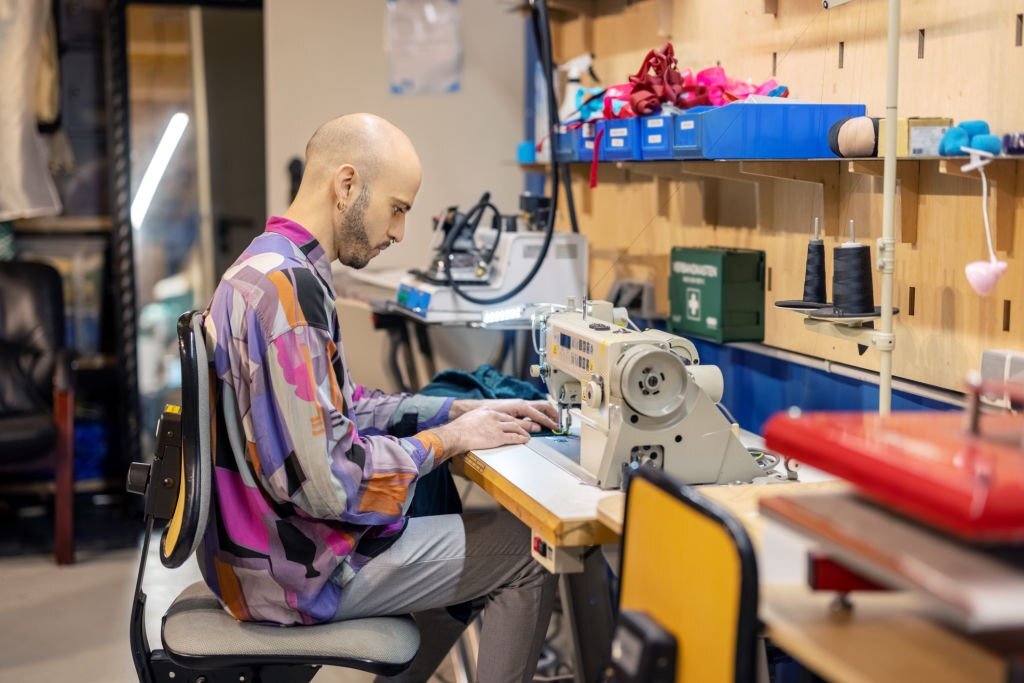

As a small fashion brand, here are some benefits of outsourcing manufacturing that will help your business grow:
Lower Costs. The most obvious benefit is reducing production costs. By outsourcing to countries with lower labour and material costs, you can manufacture your goods for a fraction of the price. This allows you to increase your profit margins or lower retail prices to gain a competitive advantage.
Access To Expertise. Outsourcing also gives you access to highly specialized skills and technical expertise that would be difficult to develop in-house. For example, a manufacturing partner likely has extensive experience with pattern making, grading, and fit, allowing them to produce high-quality garments efficiently.
Scalability. It can be challenging for a small brand to scale quickly. Outsourcing removes capacity constraints, making it easy to ramp up production to meet demand. Your manufacturing partner already has the resources, equipment, and staffing in place to produce large volumes.
Focus On Your Strengths. You can concentrate your efforts on the areas where you are most successful, such as design, marketing, and sales, by outsourcing manufacturing. So that you may focus more time on expanding your business, leave the operational issues to your reliable partner.
Of course, outsourcing does come with risks and downsides like a lack of control, intellectual property concerns, and long lead times. However, for a small fashion brand, the significant cost savings and other benefits often make outsourcing the best choice, at least initially, to establish your business. With careful selection of a reputable partner, outsourcing your manufacturing can be a strategic move to set your brand up for success.
Possible Drawbacks And Risks Of Outsourcing Production
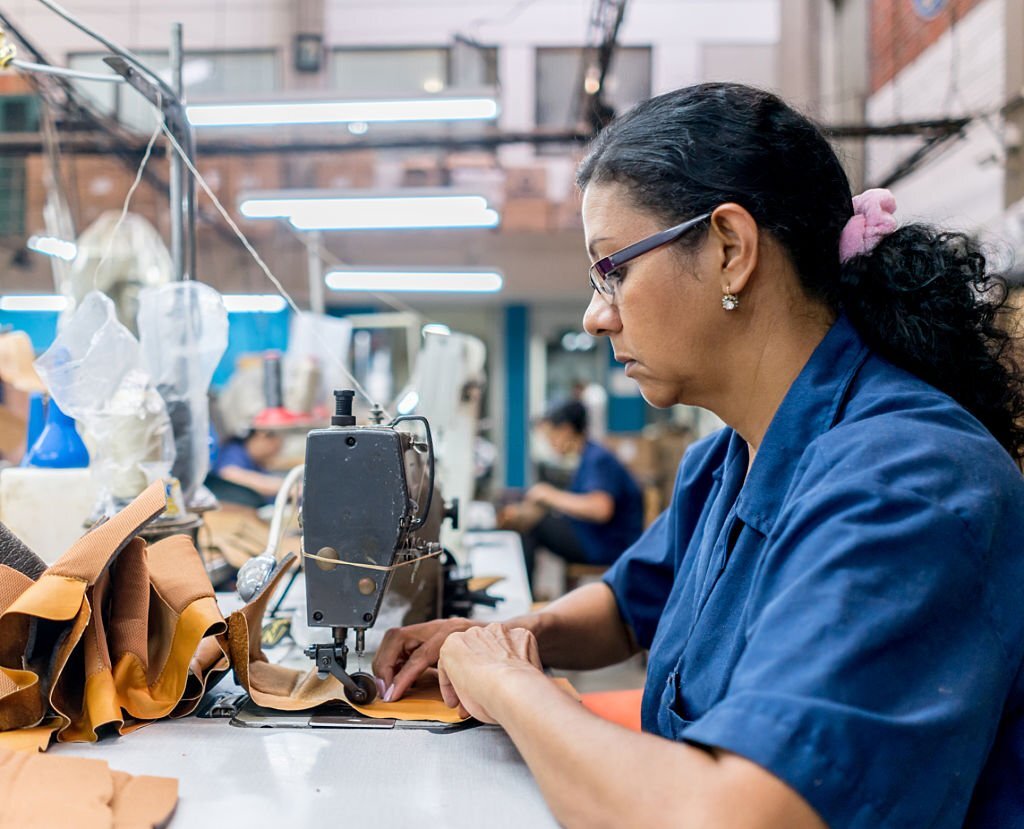

There are certain potential drawbacks and dangers to consider when outsourcing your manufacturing.
Lack of quality control is one of the major risks. Outsourcing production results in a loss of direct control over the manufacturing process. Standards and quality can slip without close supervision, resulting in subpar products that damage your brand. Be extremely diligent in vetting potential partners, and clearly outline your quality expectations in any contracts.
Outsourcing also means relinquishing some control over your intellectual property, like designs, patterns, or tech specs. There is a chance confidential information could be copied or leaked, especially if working with overseas partners. Carefully review each factory’s track record and security procedures. Consider non-disclosure agreements if needed.
Communication challenges and logistical issues frequently arise when working across borders and time zones. Miscommunications can lead to production delays, defects, and excess costs. Build in extra time for feedback loops and consider hiring a liaison familiar with the local language and customs.
Changes in political climates or trade policies can also impact outsourced manufacturing. Tariffs, sanctions, or restrictions may be imposed that disrupt your supply chain or make production prohibitively expensive. Diversifying among a few locations helps minimize risk.
While outsourcing production does pose risks, many can be mitigated with thorough vetting of partners, airtight contracts, open communication, and contingency plans. For small brands, the significant cost savings often far outweigh the potential downsides if you go in with realistic expectations and your eyes open to the possible risks. With due diligence, outsourcing manufacturing for clothing can be a strategic move that fuels growth.
The Growing Trend of Outsourcing Manufacturing in Fashion
The fashion industry has seen a major shift to overseas manufacturing companies for clothing in recent decades. As a small fashion business owner, following this trend can save you money while allowing you to focus on design. However, outsourcing also brings challenges you’ll want to consider.
Lower Costs
Manufacturing in developing countries often comes with significantly lower costs for materials and labour. You’ll pay a fraction of the price for the same quality. This means higher profit margins and the ability to invest in growing your business.
Focus On Your Strengths.
Free from managing the manufacturing process, you can focus your time and energy on creating new collections and building your brand. Let an experienced factory handle the technical details of production while you do what you do best—design stylish, innovative clothing and accessories.
Quality Control Issues
However, outsourcing manufacturing companies also introduce risks around quality and working conditions. It can be difficult to vet and monitor overseas suppliers thoroughly, and you may end up with subpar, unsafe products. You’ll need to build a trusted relationship, clearly communicate your standards, and regularly inspect materials and finished goods.
Long Lead Times
Working with an overseas supplier also typically means longer production schedules and shipping times. You’ll need to plan collections far in advance and may face challenges reacting quickly to trends or problems. Factor in additional time for shipping and possibly clearing customs to ensure you get products when you need them.
For small fashion brands, outsourcing clothing manufacturing brings both significant advantages and risks. You must go in with your eyes open. With diligent vetting and oversight, outsourcing can be a key strategy for controlling costs and scaling your business. But keep in mind that your brand’s integrity and quality are valuable assets to safeguard. The secret to your long-term success will be striking the correct balance.
Choosing the Right Partner for Outsourcing Manufacturing in Fashion
How do I find a clothing manufacturer for outsourcing? Choosing a manufacturing partner is one of the most important decisions you’ll make as a fashion business owner. The right partner can help scale your operations, reduce costs, and improve quality, while the wrong choice may damage your brand and bottom line. Here are some tips for finding an ethical, responsible outsourcing partner:
- Look for experience in your product type. Seek out manufacturers with expertise in your particular niche, whether it’s t-shirts, couture dresses, handbags, etc. They’ll understand the intricacies and be able to achieve high-quality results.
- Check for certifications and audits. Responsible manufacturers promote fair wages and safe conditions for workers.
- Visit the production outsourcing facility if possible. Seeing operations firsthand is the best way to assess quality standards, working conditions, and company culture. If visiting isn’t feasible, request video footage or live video calls to get a feel for the environment.
- Request references and clothing sample production. Ask the manufacturer for references from other clients, especially those producing similar products. Also, ask to see samples of their work to ensure high quality before committing to an order.
- Negotiate a mutually agreeable contract. The contract should cover details like production timelines, quality standards, labour compliance, confidentiality, and intellectual property protection. Be willing to compromise to establish a trusting partnership.
An ethical, experienced manufacturing partner can help take your fashion brand to the next level. Do your due diligence to find a company that shares your values and commitment to quality. You’ll be able to concentrate on developing your creative vision and interacting with clients if the right partner is supporting your operations. Make sensible decisions today, since they will affect the future of your brand!
Tips for Managing an Overseas Supply Chain
Managing an overseas supply chain for your fashion business comes with challenges, but with some tips, you can stay on top of things.
Find A Trusted Partner.
Work with a sourcing agent or manufacturing partner you can build a long-term relationship with. Look for referrals and check references to find someone with experience, integrity, and shared values. Meet with them in person if possible to build rapport and understanding.
Visit The Factory.
There’s no substitute for seeing the factory in person. Visit to evaluate working conditions and quality control procedures. Make sure they comply with fair labor standards and your expectations. Spot-check finished products. These visits build accountability and help avoid issues down the road.
Have A Detailed Contract.
Specify every aspect of your agreement in writing, from quality standards and delivery schedules to consequences if terms aren’t met. Be very clear about your expectations to avoid misunderstandings across cultures and languages. Review contracts annually and make revisions as needed.
Stay In Close Contact.
Even after the contract is signed, stay in frequent communication with your partner via calls, emails, and visits. Provide feedback, get progress updates, and address any concerns right away. Ask lots of questions to ensure you have visibility into the entire process at all times. Close contact and vigilance are key.
Plan For Challenges.
No supply chain is without hiccups. Plan for potential issues like material shortages, shipping delays, quality problems, or communication barriers. Build buffer time into production schedules and shipping dates. Have contingency plans for if things go off track, so you can respond quickly and minimize disruptions. With close management, outsourcing fashion production abroad can be very rewarding. But go in with realistic expectations, choose partners wisely, and don’t take your eye off the ball.
Conclusion
How do I outsource manufacturing? While cost savings and efficiency gains are appealing, loss of control and quality issues can be significant downsides. The key is finding the right balance for your unique situation. Maybe start small by outsourcing a portion of production to test the waters. Or require frequent check-ins and quality reviews in your contracts.
No matter which path you take, be sure to keep an eye out for both potential advantages and disadvantages. Although outsourcing isn’t for every business, it could help your fashion firm advance if you choose the proper partner and take the necessary safeguards.

